 The Sabbatini Family
The Sabbatini Family The Sabbatini Family
The Sabbatini FamilyFrom my father's side, the Sabbatini family comes from the picturesque village of Scerni, located in the community
of Chieti, central Italy (region of Abruzzo). Scerni lies over a hill, 11 km from the Adriatic sea, and today has
a little less than 4,000 inhabitants. My great-grandfather, Panfilo Sabbatini, came from a family of shepherds,
like many in the region. Scerni is very old (circa 1300), and used to be in the ancient seasonal herding route
of sheep, which, since the medieval times, had the feudal tradition of being a guaranteed stop for shepherds taking
the sheep to graze in its wide plains below the hill, or "stucco". A
network of cattle trails, called "tratturi", cover the region. The city's saint is San Panfilo; from
him probably comes my great-grandfather's baptism name. San Panfilo was a Roman martyr (there are San
Panfilo catacombs in Rome) and it is venerated throughout the Abruzzo: there is a city named after him, and
a magnificent cathedral from Byzantine times, built in Sulmona in the 11th
century. There are annual Saint Panfilo festivities in Scerni, who is commemorated on April 28th, and the parish
church is dedicated to the saint. Panfilo is also the Italian name for yacht. The famous "Elettra",
personal yacht and floating laboratory, was used by Guglielmo Marconi to carry out the
first sea-to-shore radio transmissions in history was a beautiful white panfilo.
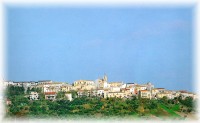 The village of Scerni, and its location in the Adriatic coast of Italy. |
 |
 Originally the family
name might have been Sabatini (with one b), or Sabatino, because they are among the 10
most common family names in the community of Scerni. However, it seems that it was changed willfully by Mr.
Panfilo when he immigrated to Brazil, in the 1880's (this was very common in the time; immigrants, upon receiving
new civil records in the new country, in the Immigrant's Hostel in São Paulo,
used to change names they didn't like). Sabbatini sounds more aristocratic than the humble origins of my family.
This patronimic originates from sabbato, or Saturday, in Italian, in the 16th century, probably from a family
originally from the region of Bologna (see the presumed coat of arms of my family). Sabatini, however, is typically
found in central Italy. Sabatino presently occurs mostly in Puglia (the region of Neaples).
Originally the family
name might have been Sabatini (with one b), or Sabatino, because they are among the 10
most common family names in the community of Scerni. However, it seems that it was changed willfully by Mr.
Panfilo when he immigrated to Brazil, in the 1880's (this was very common in the time; immigrants, upon receiving
new civil records in the new country, in the Immigrant's Hostel in São Paulo,
used to change names they didn't like). Sabbatini sounds more aristocratic than the humble origins of my family.
This patronimic originates from sabbato, or Saturday, in Italian, in the 16th century, probably from a family
originally from the region of Bologna (see the presumed coat of arms of my family). Sabatini, however, is typically
found in central Italy. Sabatino presently occurs mostly in Puglia (the region of Neaples).
Curiously, Panfilo Sabbatini married to a Maria Dominghini (curiously because her name comes from Domingo, or Sunday!) before making the trip to Brazil. They came to Campinas, in the State of São Paulo, then a small town surrounded by many coffee plantations. Slavery had been recently abolished by Dom Pedro II, the emperor, and the farmers where "importing" peasants from Italy to work the fields. Italy, at the time, was suffering through a heavy economic recession, wars and general poverty, and "making to America" was a major goal for poor Italians. However, my great-grandfather, who arrived still childless in Brazil, made a living not as a farmer or peasant, but as a tailor ("sarto" in Italian) in the city. Tailors wre in great demand by the immigrant community. He was also an accomplished musician (he played the tuba) and orchestra conductor. He founded in Campinas its first Philarmonic Band, compounded mostly by Italians, who used to play every Sunday and in festive occasions in Campinas' central park's bandstand or "coreto" (still surviving...). One of Campinas' streets is named after him, because of that.
Panfilo and Maria had four children in Campinas. Since he was a fierce lover of Giuseppi Verdi (1813-1901), the famous Italian opera composer, he made a case of giving names to all his children which were derived from Verdi's operas: Falstaff, Ernani, Aida and Gioconda. My grandfather, Falstaff Americo Umberto Sabbatini, was his first son, and became also an opera lover and occasional singer, and a tailor by profession. A curious family legend is that the city's notarian revolted against such an improbable name (Sir John Falstaff, in fact, comes from a remarkable character in one of William Shakespeare's play, "The Merry Wives of Windsor", and was used in one of Verdi's comedy operas, with a libretto by Arrigo Boito) and asked my great-grandfather to give him a more "Christian" name. He agreed, and "Americo" was a homage to America, his new land, and "Umberto" a homage to the King Umberto I of the recently unified Kingdom of Italy. The curious part of the story is that my grandfather knew about his two other names only he was conscripted by the Army and had to get a birth certificate!
My grandfather married Joanna ("Nina") Gargantini in 1920. She was born in Descalvado, state of São Paulo, to a large family that immigrated from the region north of Milano, Italy. My father, João Baptista (Jonh, the Baptist), was their first child, born in August 1921, in the same maternity as my grandfather (a hospital founded by the Italian community of Campinas, the Circolo Italiani Uniti, or the circle of united Italians), and was baptized in the same church (the imponent and beautiful Cathedral of Campinas, which bears the name the city's patron saint, Our Appeared Lady, or Nossa Senhora Aparecida, so named because of a statue which was found by fishermen in the Paraiba river in the 18th century). In 1945, my father met and married Dolores Endrizzi, and I was born to them as their first child, in Campinas, in 1947 (also in the same maternity, now named Casa de Saúde, or Health House, because of the wartime restrictions imposed by the Brazilian government against Italians, which were the "enemy" then...), and baptized in the same church (this makes my father inordinately proud!).
The following maps show the present distribution of Sabbatini and Gargantini surnames in Italy. It makes clear
my geographical origins from the paternal side.
 |
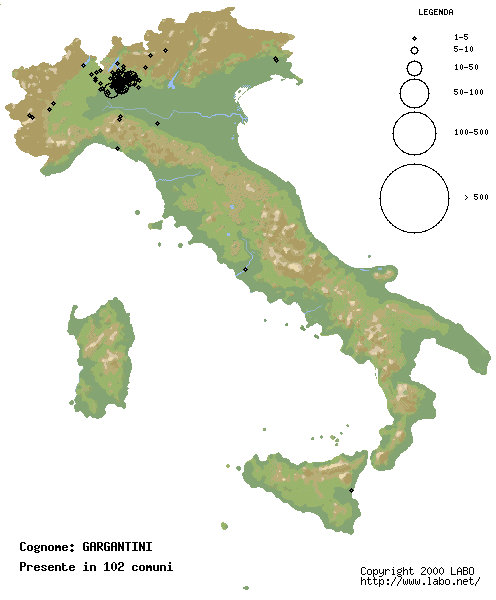 |
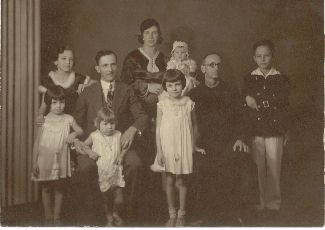 The Endrizzi Family
The Endrizzi FamilyMy mother, Dolores Endrizzi (the family legend says that her name, which means "pains"
in Spanish, was so given by my grandmother because she suffered a lot during her parturition), was the second child
of Gelinda Roat Endrizzi and Henrique Endrizzi, my maternal
grandparents. She was born in February 1922, two months after my grandparents arrived from Italy, as immigrants.
My grandfather was an agricultural technician who studied in Trieste, and who belonged
to a traditional family of winemakers of the region of Trento. Understandably, he was specialized in enology, the
science of wine making. His parents were Ursula Bentivoglio Endrizzi and Enrico Endrizzi. Both were born in the
same region, the Trentino-Alto Adige, which was, at that time, a part of the Austrian-Hungarian empire. They considered
themselves Austrian, not Italians, and spoke a thick Tiroler German dialect at home (Bajuwarisch), as well as the
Venetian dialect of Italian (Veneto). However, they immigrated to Brazil around 1880 and set up active professions
in São Paulo, my great-grandfather as a printshop owner and my great-grandmother as a midwife ("parteira",
in Portuguese), said to be the first one to develop this as a formal profession in Brazil. My grandfather Henrique
was born in São Paulo, and thus was a Brazilian, but he had double citizenship in Austria. He returned to
Italy to study when young, the same happening with his two brothers. One of them ended up in Bari, where he owned
the local spa (Terme di Bari) and the other one, who was said to be an adventurer and revolutionary, died in a
prison in Chile.
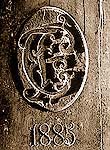 The Endrizzi surname
is common in the region. Today, the many branches of the Endrizzi family can be found in Bolzano, Trento, Sarnonico,
Cavedago, Cles, Dercolo, Spormaggiore and Fai della Paganella, these last mostly
in the Val di Non region (Dolomiti di Brenta), where they live since the middle 16th
century. In fact, it is rather famous in the whole world, due to the quality of the Fratelli Endrizzi
fine wines, founded 1885. It is a very old family, although bearing a rare surname in Italian, which seems
to be a modification from Endrici or Endrighi, which took place ca.1525. Endrighi is the plural form of Endrigo
(the surname of a marvelous Italian singer, Sergio Endrigo). The root "Endr"
is probably German or Hungarian in origin and my great-great-grandparents came from Austria in the beginning of
the 19th century. The Endrizzi spread thinly to Northern Italy (mostly the Veneto and along the northern slopes
of the Apennines), Austria, Brazil and the USA.
The Endrizzi surname
is common in the region. Today, the many branches of the Endrizzi family can be found in Bolzano, Trento, Sarnonico,
Cavedago, Cles, Dercolo, Spormaggiore and Fai della Paganella, these last mostly
in the Val di Non region (Dolomiti di Brenta), where they live since the middle 16th
century. In fact, it is rather famous in the whole world, due to the quality of the Fratelli Endrizzi
fine wines, founded 1885. It is a very old family, although bearing a rare surname in Italian, which seems
to be a modification from Endrici or Endrighi, which took place ca.1525. Endrighi is the plural form of Endrigo
(the surname of a marvelous Italian singer, Sergio Endrigo). The root "Endr"
is probably German or Hungarian in origin and my great-great-grandparents came from Austria in the beginning of
the 19th century. The Endrizzi spread thinly to Northern Italy (mostly the Veneto and along the northern slopes
of the Apennines), Austria, Brazil and the USA.
My grandmother Gelinda was born in the small village of Ischia di Pergine, located in San Cristoforo, by the
Lake of Caldonazzo. It is located only 8 km from Trento, the capital city of the Province
of Trentino-Alto Adige. This is one of the most beautiful regions of Europe. It is located in the Valsugana Valley,
which is part of the system of Alpine valleys and passes that connect Austria's Innsbruck to Northern Italy's Verona
(the best known being the Brenner, or Brennero, pass), historically important since the
Roman times. In this pass we find successively the cities of Bolzano (Bozen, in German),
Trento (Trier, in German), and, already in the gates to the Venetian plains, the city
of Rovereto. The Lake Caldonazzo is very deep and cold, as are the more than 200 lakes
in the Valsugana region. They were excavated by the receding glaciers in the last Glacial Age, and are fed by the
innumerable rivulets coming down from the moltening ice from the high mountains of the Austrian and Italian Alps.
More than 60% of the inhabitants of Alto Adige (the name of a river) are of German origin, who live there since
Medieval times, and most of the population speaks this language. Street signs and newspapers are in German, too.
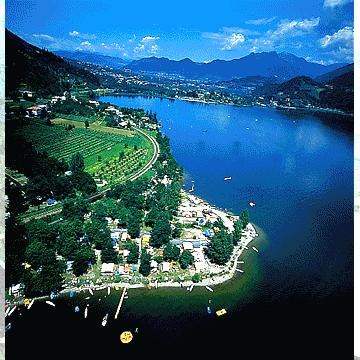 The lake of Caldonazzo showing the Pergine Valsugana region (northern tip, looking to the Italian Alps). At right, a map of the canneti di San Cristoforo, showing the location of Ischia, very near to Trento. |
 |
The region is strewn with old castles and military forts perched atop steep mountains, which have a privileged command of the passes below (which explains why the Bavarians and Austrians held the region for more than 300 years). Pergine was located exactly at the front line between the Austrian-Hungarian and Italian forces in the First World War, and witnessed fierce battles where hundreds of thousands of soldiers died in protracted trenches-and-artillery battles. One of my great-uncles, Luigi Roat, was a much decorated officer who survived the awful Battle of Caporetto (more than 200,000 dead). Another curious family legend is that the father of my grandmother Gelinda (a fierce longpipe-smoking Austrian with the surname of Roat, which means "red") had two portraits at home: one of Franz Joseph, the Austrian emperor, and another of Vittorio Emmanuele, the king of Italy. Depending on the military occupant of the day (the frontier line switched sides several times) he would hang the "right" portrait (so much for the ability of Italians to survive...)
The following map shows the present distribution of the Endrizzi and Roat surnames in Italy, showing its high
concentration in the Trentino-Alto Adige region.
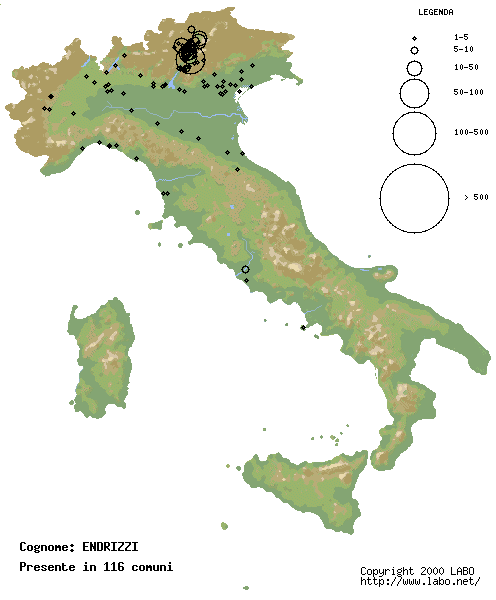 |
 |
After returning to study agricultural engineering in Italy, my grandfather Henrique was detained at the start of the First World War, because he could not escape in time to Brazil. He remained in house prison at a small winery near Trieste for the duration of war, and fortunately was not called to arms because of this (otherwise I probably would not be here writing this account...). After being released, he found work in Trento's winery cooperatives and got married to a local girl. Just after having a daughter, Maria, in 1919, his wife died in the Spanish flu epidemic. He married again, this time, as he used to say jokingly, to "an ignorant Tiroler peasant", my grandmother Gelinda. A son, Luciano, was born to them in 1920, in Rovereto, where he was also working at the time. The postwar times were difficult ones, however, and one of Henrique's brother, who was a priest in São Paulo, advised him to return to Brazil, which he did after Christmas 1921, in a harrowing one-month trip by boat from Trieste to Santos, with his new wife, pregnant of my mother, and my uncles Luciano and Maria, who were still infants. What a courage!
After moving from town to town in the state of São Paulo, my grandfather Henrique finally settled in
Campinas, where he worked for the Agronomical Institute, a venerable state research institution.
There, my father met my mother when they were 21/22 years old and married in 1945. Here you can see a digitally
doctored photo of them, side by side, when they were both 8 years old (they didn't know each other at the time!).
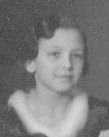
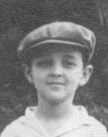
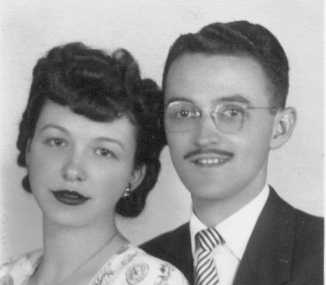
And here I am!
Scerni, Province of Chieto, Abruzzo 2000.
Surname list for Scerni. Abruzzo 2000.
Comune di Scerni. Official home page of the municipality.
Comune di Scerni. Communitá Montana Mediovastese
Scerni old postcards
Scerni webcam.
Aerial photo of Scerni
Elettra, La Nave Dei Miracoli. Nautica On Line
San Panfilo, martire
Sulmona: Cattedrale di San Panfilo
"Falstaff", Commedia lirica
en 3 atti, Musica di Giuseppe Verdi, Libretto di Arrigo Boigo
Fondazione Giuseppe Verdi: Falstaff
William Shakespeare: The Merry Wives of Windsor
Edgard Leuenroth Archive, State University
of Campinas
L'Origine dei Cognomi in Italia: Sabbatini
L'Italia dei Cognomi. Gens
Italian White Pages by Province
The Fratelli Endrizzi Winery, Trento
Il Piave, la battaglia che condusse alla vittoria
l'esercito italiano
Spormaggiore, Trentino
Descalvado On-Line
Società Fratellanza Italiana di Descalvado
Memorial do Imigrante de São Paulo